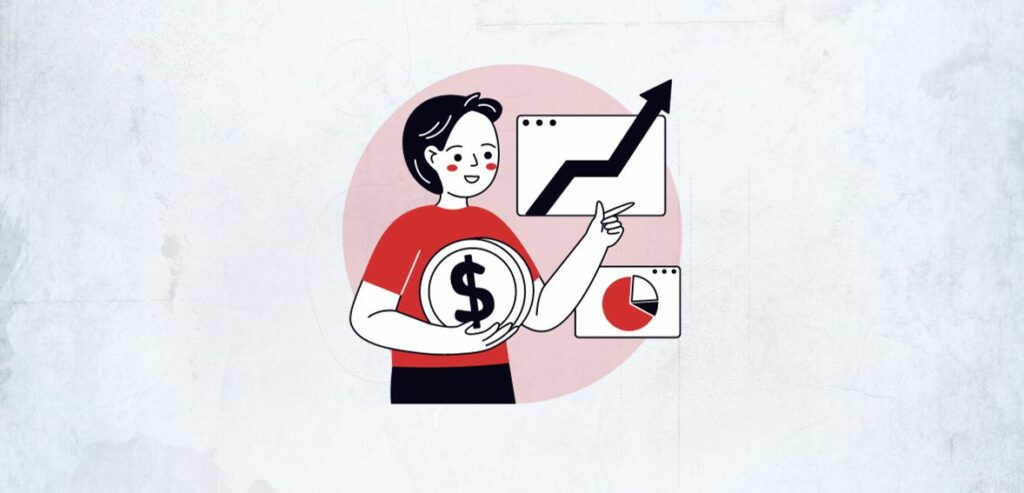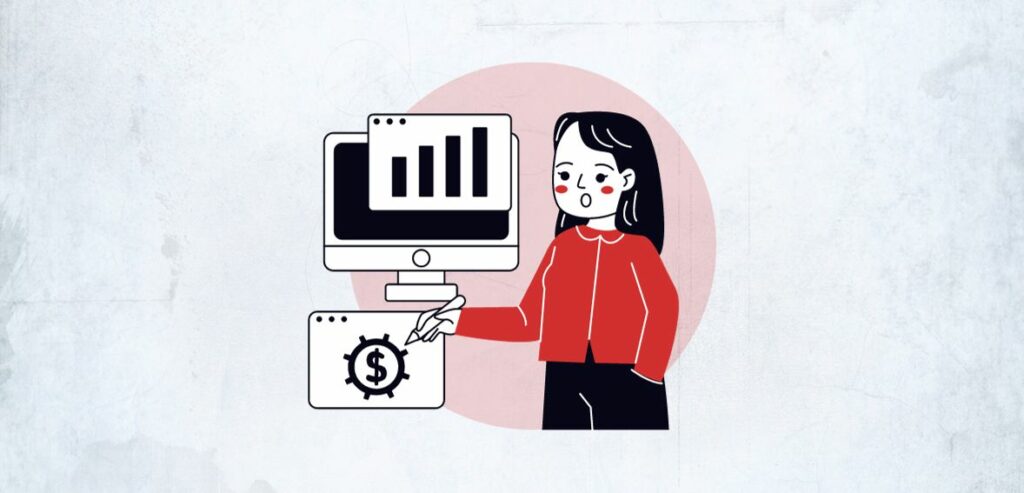In today’s dynamic healthcare environment, efficiently managing revenue cycles is more vital than ever. Healthcare providers nationwide strive to enhance financial efficiency without compromising patient care quality. Two commonly adopted strategies include outsourcing RCM which is Revenue Cycle Management or utilizing Healthcare Payment Systems (RCM Software).
When choosing between the two, most facilities choose the latter as handling claims, patient collections, and medical billing is a complex and more confidential task. That is why 22% of revenue leaders leverage Healthcare Payment software to maintain organization and accuracy. This approach offers swift processing, simplified payments, and reduced operational costs. The traditional practice of outsourcing teams is gradually phasing out, with in-house RCM emerging as a preferred choice for businesses aiming for improved outcomes and cost efficiency.
Understanding Revenue Cycle Management In Healthcare
RCM, or Revenue Cycle Management, is the financial backbone of healthcare facilities. It employs specialized medical billing software to monitor a patient’s journey from the initial registration and appointment booking to settling the final payment. RCM bridges the gap between the administrative and clinical aspects of healthcare. It combines essential patient details, like name and insurance information, with their medical treatment data.

Effective communication with health insurance companies is pivotal within the RCM framework. Before a patient’s appointment, healthcare providers typically verify the patient’s insurance details. If this task is outsourced, specialized teams manage it.
Post-treatment, a healthcare coder assigns specific ICD-10 codes to describe the treatment provided. Subsequently, the healthcare facility submits a detailed care summary to the patient’s insurance, complete with Current Procedural Technology and ICD codes. This process determines the extent of insurance coverage, with any remaining costs billed to the patient.
What Is A Revenue Cycle Management Software?
Effective RCM software plays a crucial role in assisting healthcare providers in efficiently managing their revenue processes. By automating tasks like billing and collections, RCM software enhances efficiency and accelerates the payment collection for services rendered. In fact, as of recent data, 89% of healthcare facilities in the US have RCM Software.
However, not all RCM software is created equal, and distinguishing the best from the rest involves recognizing key features. Here are some key features to look for:
- Should track and manage claims seamlessly, maintaining visibility throughout the entire process to ensure timely reimbursement.
- Streamline appointment scheduling and automate communication, enhancing patient engagement and optimizing resource allocation.
- Verify insurance coverage efficiently to prevent claim denials and ensure accurate billing.
- Capture charges accurately and promptly, minimizing revenue leakage and enhancing billing accuracy.
- Integrate comprehensive billing and coding capabilities to reduce the risk of errors, ensuring compliance and maximizing revenue potential.
When it comes to medical billing and collections, professionals understand the distinguishing factors that set top-notch RCM software apart. When considering RCM software, one pivotal feature to seek is its capability to automate and streamline claims management, payment processing, and the overall revenue workflow within a healthcare provider’s office. This involves reducing manual interventions, allowing providers to prioritize their primary objective of delivering high-quality patient care.
The best RCM software solutions typically have features such as automatic account edits, integrated Electronic Medical Record (EMR) interfaces, online claim submission, and automated billing processes.
Outsourcing Revenue Cycle Management

Outsourcing your hospital’s RCM means partnering with external experts to manage administrative tasks like billing and coding. These specialized RCM providers bring valuable skills, advanced technology, and flexibility to your operations, tackling many of the challenges you might face in day-to-day operations.
A key benefit of outsourcing is cost savings. By outsourcing RCM, hospitals can cut down on overhead expenses, sidestep staffing challenges, and avoid hefty investments in specialized software and infrastructure. This frees up resources, allowing healthcare providers to concentrate on patient care while the outsourced RCM experts handle the financial side of things.
Additionally, outsourced RCM teams offer a dedicated group of professionals who keep up-to-date with the latest healthcare regulations and coding changes. Their expertise minimizes errors, reduces claim denials, and ensures compliance, leading to faster payments and a healthier revenue stream.
Benefits Of Outsourcing RCM
- Expertise in Handling Complex Operations
Outsourcing RCM offers healthcare providers access to specialized expertise that can significantly improve the accuracy and efficiency of financial operations. These external RCM providers possess in-depth knowledge of industry best practices, regulations, and compliance requirements.
By entrusting these tasks to experts, healthcare organizations can minimize errors, reduce regulatory risks, and ensure adherence to stringent healthcare standards, such as HIPAA. This specialized knowledge acts as a valuable asset, enabling organizations to navigate complex billing processes with confidence and precision.
- Flexible and Scalable
Another compelling benefit of outsourcing RCM is the scalability it affords healthcare providers. Organizations can tailor the scope of RCM services to align with their evolving needs, whether expanding operations or streamlining resources.
This scalability ensures that healthcare providers can adapt to fluctuating demand, optimize resource allocation, and maintain financial stability. With the flexibility offered by outsourcing, organizations can achieve a more agile and responsive approach to financial operations management, positioning them for long-term success and growth.
- Consistency in the Operations
One of the primary advantages of outsourcing RCM is the consistent and efficient processes that external providers bring to the table. These specialized firms have mastered their methodologies to deliver streamlined operations, minimizing the likelihood of bottlenecks or delays in the revenue cycle.
Their proven workflows and best practices in your workflow can enhance operational efficiency, optimize resource utilization, and facilitate a more predictable revenue stream for healthcare organizations.
- No Headache of Regulatory Changes
Staying acquainted with regulatory changes, coding updates, and payer requirements is crucial in today’s advanced healthcare sector. Outsourced RCM providers excel in this aspect by offering unparalleled adaptability to shifts in industry regulations and standards.
These specialized firms maintain dedicated teams that continuously monitor legislative updates, interpret coding changes, and adjust billing practices accordingly. This proactive approach ensures that healthcare organizations remain compliant with regulatory mandates, avoid potential penalties, and capitalize on new opportunities for revenue optimization.
Drawbacks Of Outsourcing Revenue Cycle Management

- Delays in Communication
Outsourcing RCM can sometimes complicate communication. Additional steps in the process may lead to slower exchanges and potential errors. If the outsourced team doesn’t have the most current details, they might provide inaccurate information.
This can cause payment delays, extend the time accounts remain outstanding, impact your revenue, and as a result upset your patient. In fact, 42% of individuals avoid a healthcare facility where they have bad experiences during the RCM process.
- Extended Timeframes for Completion
While outsourcing aims to enhance efficiency, it can inadvertently prolong the time needed to finalize RCM tasks due to added layers of coordination. Additionally, your account may not always be the top priority for the outsourcing agency, further stretching the turnaround period.
- Inconsistent Contacts and Turnover
The challenge of finding qualified staff isn’t unique to hospitals; it also affects outsourcing agencies. High turnover rates in RCM agencies can lead to frequent changes in your primary contact person. Just when you feel aligned with your account manager, you might discover a new individual in that role the next week. This unpredictability can be challenging to manage, especially since it’s beyond your control.
- Concerns with Data Sharing
When you outsource your RCM, you’ll likely need to share sensitive data with the service provider and any other entities they work with. Information sharing outside your organization can present several risks:
- Security Concerns
Granting external parties access to your data increases the potential for security breaches. Even if you implement robust security measures on your side, you can’t guarantee that all third-party vendors will uphold similar standards. Alarmingly, third parties are implicated in a significant portion of data breaches.
Being the custodian of your data means you’re responsible for its proper handling. If a third-party vendor misuses this data intentionally or accidentally, your organization could face legal consequences. This may include financial penalties, legal action, and harm to your professional reputation.
Managing Revenue Cycle Management With In-House Software

Having an in-house team for your medical coding and billing offers several advantages. One major plus is your direct oversight and immediate control over your RCM processes. This setup allows you the flexibility to experiment with new strategies and quickly address any billing challenges your team encounters, given that everyone is working together under the same roof.
Investing in a dedicated in-house RCM team with skilled coders, trained personnel, and a robust billing system can be a wise long-term investment for your organization. With these elements in place, your focus can shift to optimizing operations, setting the stage for a highly efficient RCM system.
Benefits Of Using In-Person Revenue Cycle Management Software
- Instant Accessibility
While platforms like Google Meet or Zoom offer sophisticated virtual communication, there’s a unique quality to face-to-face interactions that online meetings can’t fully capture. In a traditional office setup for RCM, your team is just a short walk away. This proximity may be appealing, especially to those who value in-person collaboration.
However, today’s technology has come a long way in bridging this gap. While virtual interactions may not replicate the in-person experience entirely, they can come remarkably close, offering a viable alternative for effective teamwork.
- Building Stronger Team Connections
Humans naturally seek social connections, and this extends to relationships with colleagues, including those in your RCM team.
If you value close-knit workplace relationships and enjoy bonding with coworkers, an in-house RCM approach might be more appealing. While you might envision grabbing lunch or celebrating holidays with an in-office team member, such interactions are less likely with a remote biller.
- Maintaining a Hands-On Approach
If you prefer maintaining direct oversight of all aspects of your business operations, then in-house RCM is likely your preferred choice. Collaborating with a remote RCM provider means relinquishing some degree of control. It’s crucial to be at ease with allowing external teams to operate independently for the outsourced RCM strategy to succeed.
However, it’s worth noting that excessive control can lead to counterproductive micromanagement. Before potentially slowing your outsourced RCM team’s performance with overly restrictive oversight, take a moment to reflect on your leadership style and ensure it aligns with your chosen approach.
- A Strategic Approach to Data Security
Opting for in-house billing offers distinct advantages regarding safeguarding patient confidentiality. By managing the billing process internally, healthcare organizations can exert greater control over the entire lifecycle of patient records. This control enables them to implement tailored security measures, stringent access controls, and regular audits to ensure compliance with privacy regulations such as HIPAA.
In-house billing also allows for a more structured data access and storage approach. Healthcare organizations can establish specific protocols governing who can access patient records, under what circumstances, and for what purposes. Furthermore, by maintaining physical and digital records within secure, on-site facilities, organizations can minimize the risks associated with external data transfers or third-party handling, thereby reducing the likelihood of data breaches or unauthorized disclosures.
- Worthful Investment
For healthcare providers who have established an in-house medical billing team, the initial investment often encompasses a range of resources. This investment typically includes recruiting skilled billing experts, providing comprehensive training for staff members, and deploying advanced billing technology solutions. While these upfront costs may seem substantial, they lay the foundation for a robust and efficient billing infrastructure tailored to the unique needs of the organization.
Once the foundational elements of an in-house billing team are in place, the focus shifts toward optimizing operational efficiency to maximize ROI. Identifying and addressing any existing inefficiencies or bottlenecks in the billing process can yield significant improvements in RCM. With process automation, data analytics, and continuous performance monitoring, healthcare organizations can fine-tune their billing operations, streamline workflows, and enhance overall financial performance.
Drawbacks Of Using In-Person Revenue Cycle Management Software
- Risk of Errors and Oversight
When healthcare organizations opt to manage RCM internally, the likelihood of encountering errors in billing operations increases. Unlike specialized RCM providers who possess dedicated expertise and sophisticated systems to minimize inaccuracies, individual staff members may inadvertently commit errors due to a lack of specialized training or oversight.
Additionally, the absence of a structured employee performance tracking system can further exacerbate this issue, allowing potential neglect or oversight to go unnoticed until it impacts financial outcomes.
- Less Focus on Core Competencies
While maintaining direct control over billing operations may offer insights into the intricacies of RCM, it often comes at the expense of diverting valuable time and resources away from core clinical services and patient care.
Healthcare organizations thrive on their ability to deliver high-quality care and build patient trust, both of which are foundational to their reputation and long-term success. Failing to allocate sufficient time and attention to these essential aspects can potentially undermine the organization’s credibility, jeopardize patient satisfaction, and result in a loss of business over time.
- Implications of Continuous Training
The constant flux in medical regulations requires teams to undergo regular training updates and continuous education to stay current with the latest industry standards. This ongoing commitment to training not only consumes valuable time but also necessitates a substantial investment in resources to ensure that in-house teams remain competent and compliant.
Allocating resources for continuous training and professional development represents a considerable financial and operational burden for healthcare organizations. Beyond the direct costs associated with training programs, seminars, and certifications, there are also indirect costs related to productivity losses during training periods and potential disruptions to daily operations. Furthermore, the administrative complexities of tracking training compliance, managing certifications, and assessing competency levels can further strain organizational resources.
Why In-House Revenue Cycle Management Software May Be A Better Choice Than Outsourcing?
When it comes to managing the revenue cycle of a healthcare facility, there are multiple strategies to consider. While outsourcing this task to external agencies has its benefits, it’s worth exploring an alternative approach, but as your primary link, utilizing specialized software should be your top choice. This method offers numerous benefits without all the drawbacks associated with outsourcing.
Boost Your Team’s Efficiency Without Expanding Your Staff
One of the main advantages of outsourcing RCM is its potential to streamline operations. By leveraging automated workflows, many common errors linked with manual handling of patient accounts can be minimized. The good news? RCM software can achieve the same outcome, but with better results. The difference lies in implementation—you can introduce this software to your current team rather than relying on an external agency.
The software minimizes your staff’s hours on repetitive administrative duties by automating routine tasks like patient registration, insurance validation, and claims processing. As a result, your team can redirect their energy toward more impactful, high-priority tasks that contribute to patient care and revenue generation.
It also has the ability to detect and rectify errors early in the process. Catching mistakes before they reach the billing stage can save both time and money. The software can flag these issues for immediate attention, whether it’s inaccurate patient details, coding discrepancies, or missing paperwork. Addressing these errors upfront can prevent costly delays and ensure a smoother revenue cycle.
Safeguarding Your Data Integrity
When it comes to RCM, data security is paramount. Utilizing specialized software offers a centralized solution that enables you to retain control of your data within your organization. This means you don’t have to share sensitive patient information with external entities, reducing the risks associated with third-party data handling.
The technology embedded in RCM software isn’t just for outsourcing firms; it’s accessible for in-house teams too. Your RCM team gains access to a unified, up-to-date data repository by leveraging this software. This centralized hub enhances communication and collaboration among various departments—be it billing, coding, or collections—without the complications of engaging with external vendors. The result – your team can make well-informed decisions based on real-time data, potentially achieving even higher levels of efficiency than those achieved through outsourcing.
Accelerating Communication and Workflow
One common challenge with outsourcing is the potential for communication delays. External agencies often operate in different time zones and manage multiple clients, leading to extended turnaround times. Such delays can be detrimental in an environment where timely revenue collection is critical.
By opting for in-house RCM software, you can capitalize on the immediacy of internal communication. Team members can collaborate in real-time, discussing issues, sharing insights, and making decisions without the hindrance of time zone differences or external dependencies. This streamlined communication facilitates quicker resolution of tasks and enhances overall operational efficiency.
Leveraging Industry Knowledge for Informed Decision-Making
Much like specialized RCM agencies, software vendors in the RCM space have a wealth of industry-specific knowledge. These vendors accumulate valuable insights and expertise by partnering with numerous healthcare practices, specialties, and payers. This collective experience enables them to offer tailored guidance and best practices, helping organizations optimize their RCM strategies.
While your internal team manages the day-to-day aspects of RCM, the support services provided by RCM software vendors serve as a valuable resource. Should you encounter challenges or have questions, the vendor’s customer support team, composed of highly skilled professionals, is readily available to assist. This collaborative approach ensures that you can effectively navigate any complexities and fully leverage the capabilities of your chosen software solution. When evaluating RCM software, it’s crucial to consider the range of features available.
What To Look For When Selecting The Right Revenue Cycle Management Software?
When evaluating potential RCM software solutions, it’s essential to assess your current processes and identify areas for improvement thoroughly. While numerous reputable models are available, selecting the right fit for your practice hinges on its ability to enhance efficiency and provide your staff with the necessary tools to achieve their objectives effectively.
Key Qualities to Prioritize in RCM Software Selection
To guide your decision-making process, consider the following five crucial qualities that distinguish top-tier RCM software:
1. Analytics and Reporting
A robust RCM software solution should offer comprehensive reporting and analytics capabilities. You can gain valuable insights into your practice’s financial health by generating detailed reports on metrics such as denial rates, revenue trends, and Key Performance Indicators (KPIs).
These insights enable you to pinpoint areas for improvement, make data-driven decisions, and optimize RCM strategies effectively.
2. Security and Compliance
Ensuring compliance with healthcare regulations is non-negotiable when selecting RCM software. Look for solutions that adhere to stringent standards, such as HIPAA (Health Insurance Portability and Accountability Act).
Additionally, the software should incorporate robust security measures to safeguard Protected Health Information (PHI) from unauthorized access, breaches, or other potential threats. Prioritizing compliance and security mitigates risks and instills confidence in patients and stakeholders regarding the confidentiality and integrity of sensitive data.
3. Prioritizing User-Friendly Design for Seamless Integration
One of the foundational elements to look for in an RCM software solution is its ease of use. A user-friendly interface ensures that your staff can navigate the system efficiently, minimizing the learning curve and maximizing productivity. To facilitate a smooth transition, partnering with vendors offering comprehensive training and support is essential. Adequate training sessions will equip your team with the necessary skills to leverage the software’s full potential, ensuring a successful implementation process.
As your healthcare organization evolves, so will its requirements. Therefore, selecting an RCM software solution with scalability is paramount. The software should have the capability to adapt and grow in tandem with your organization’s expanding needs. This scalability ensures you can seamlessly integrate additional functionalities or accommodate a growing volume of transactions without encountering performance issues or a complete system overhaul.
4. Prioritizing Ongoing Customer Support for Long-Term Success
Reliable customer support is another critical factor to consider when choosing an RCM software solution. Opt for vendors that offer robust, ongoing support to address any queries, technical issues, or training needs that may arise post-implementation.
A responsive support team can significantly expedite problem resolution, minimize downtime, and ensure uninterrupted operations, thereby enhancing the overall efficiency and effectiveness of your RCM processes.
Conclusion
Revenue Cycle Management (RCM) is going through significant changes in the healthcare industry. Although outsourcing has been a good approach, the emergence of RCM software presents an appealing and rather “profitable” alternative. In-house RCM software empowers healthcare providers to maintain and control, streamline operations, and improve efficiency without relying on agencies. By automating tasks, ensuring data security, and enabling real-time communication, in-house RCM software solutions align with the evolving needs of healthcare organizations.
Moreover, the ability to customize features, prioritize user interfaces, and scale according to requirements positions RCM software as an asset for sustainable growth.
Frequently Asked Questions
Q: How does in-house RCM software ensure data security compared to outsourcing?
In-house RCM software allows healthcare providers to maintain direct control over sensitive patient data.
By implementing tailored security measures, stringent access controls, and regular audits, organizations can minimize the risks associated with data breaches or unauthorized disclosures. This level of control is often more challenging to achieve when outsourcing, where data is shared with external parties, increasing the potential for security vulnerabilities.Q: What are the key differences between top-tier and standard RCM software features?
Top-tier RCM software distinguishes itself through advanced functionalities such as comprehensive analytics and reporting capabilities, stringent security and compliance measures, seamless integration with existing systems, scalability to accommodate evolving organizational needs, and robust customer support.
Standard software may offer basic features but lacks the advanced tools and support required to optimize revenue cycle management effectively.Q: How can RCM software improve communication within healthcare organizations?
RCM software facilitates real-time communication by providing a centralized platform for collaboration among various departments, including billing, coding, and collections.
This integrated approach minimizes communication delays, enhances workflow efficiency, and fosters a cohesive environment where teams can promptly address issues, share insights, and make informed decisions.Q: What challenges should healthcare providers anticipate when transitioning to in-house RCM software?
Transitioning to in-house RCM software may present challenges such as the initial implementation phase, training staff on new systems, ensuring data migration accuracy, and avoiding potential integration issues with existing technologies.
Healthcare providers should proactively address these challenges by developing a comprehensive implementation plan, investing in staff training, and partnering with vendors offering robust support services.Q: How can healthcare providers maximize the return on investment (ROI) from implementing RCM software?
To maximize ROI from RCM software, healthcare providers should focus on optimizing operational efficiencies, reducing manual interventions, minimizing errors, and accelerating revenue collection cycles.
Additionally, leveraging analytics and reporting capabilities to gain actionable insights, continuously monitoring performance metrics, and regularly updating software functionalities to align with evolving industry trends and organizational needs are essential strategies for achieving long-term success and profitability.

